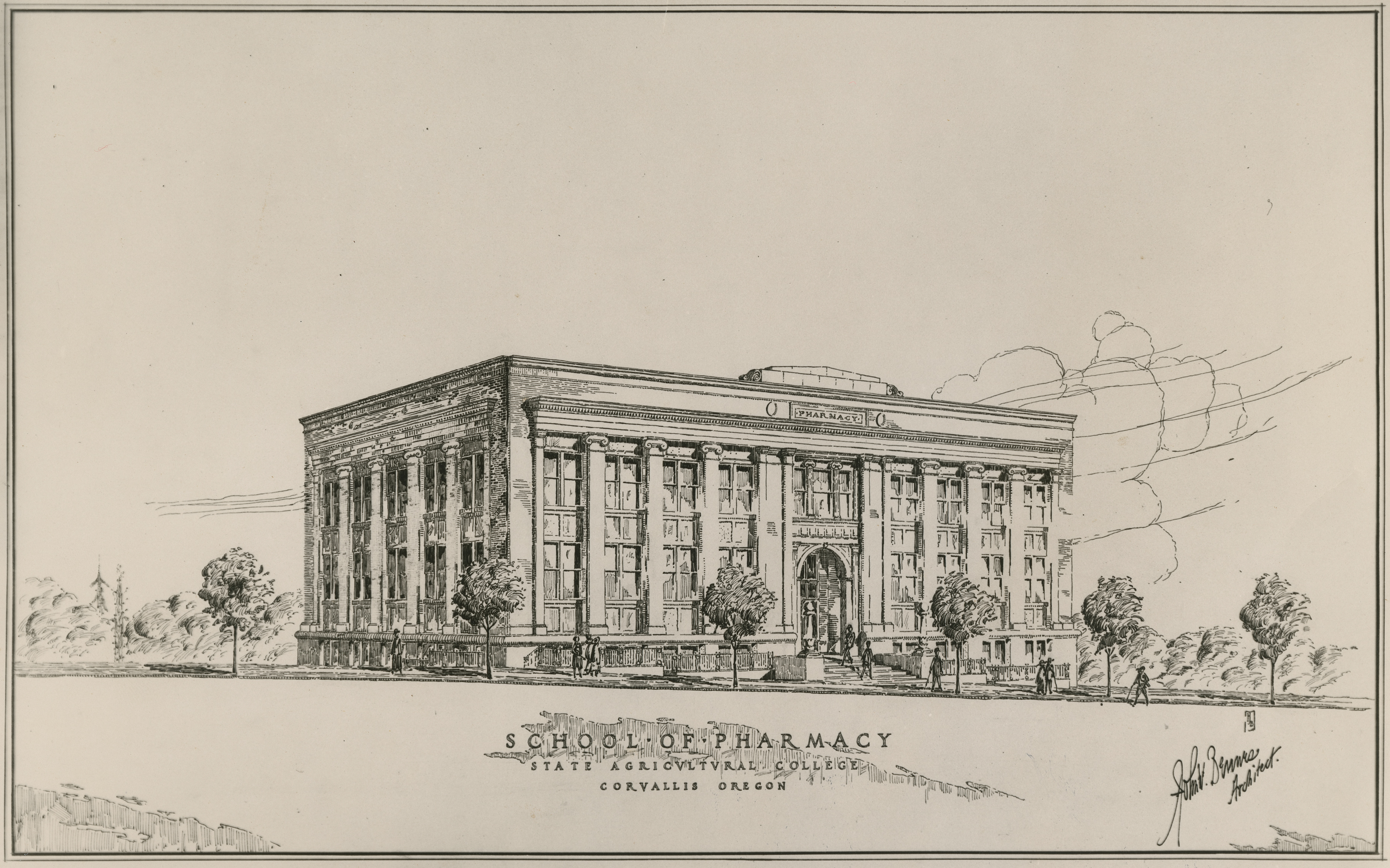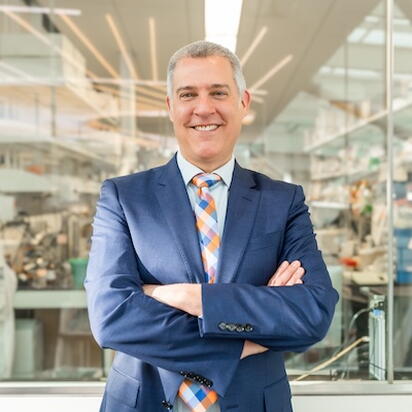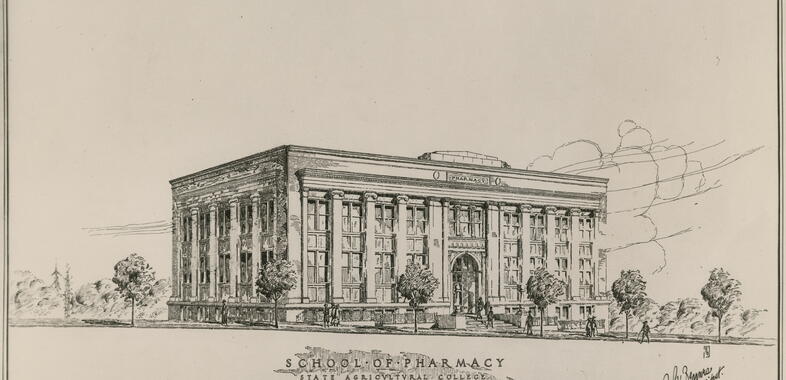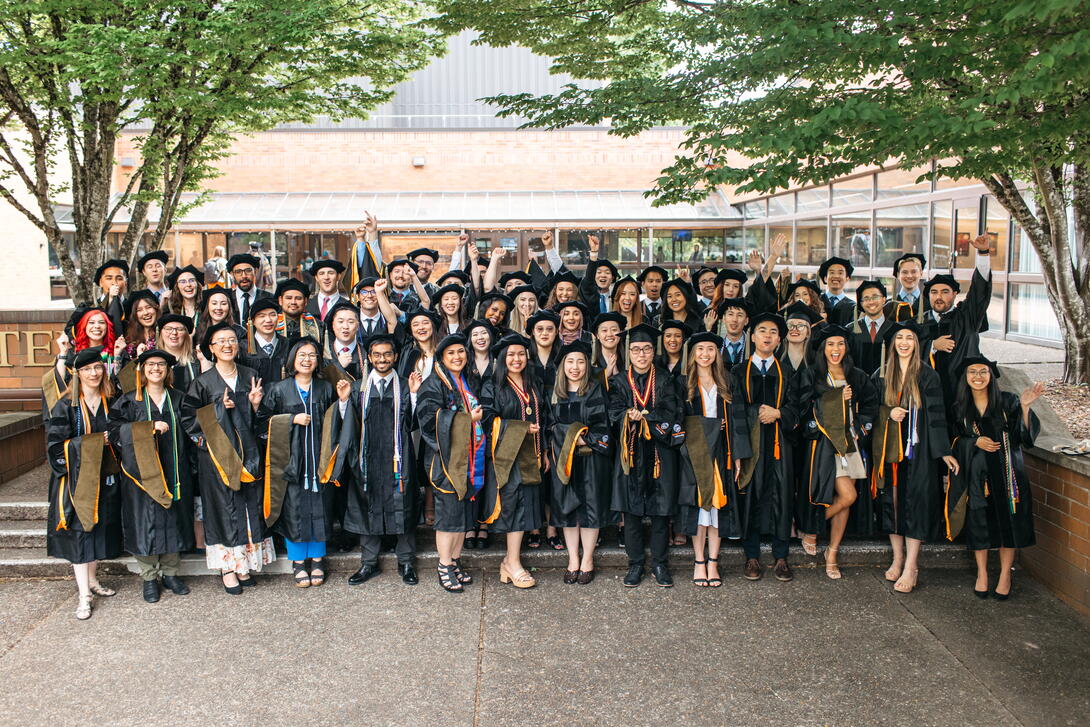Developing a Curriculum
The College of Pharmacy at Oregon State University can trace its beginnings back to 1898 at what was then the Oregon Agricultural College. Chemistry and pharmacy were in a single department and students could graduate with a Bachelors of Science (B.S.) degree in Pharmacy upon completion of a four-year program. This was one of the earliest four-year programs in the country.
1909
Pharmacy and Chemistry were separated, and five years later the first graduate program was established, allowing students to earn their Master’s in Science (M.S.) degree in Pharmacy.
1917
The established Department of Pharmacy became the School of Pharmacy and Professor Adolph Ziefle was appointed as the first dean.

Pharmacy Building and Campus Expansions
In 1923, responding to increased enrollment after World War I, the School of Pharmacy authorized the construction of its own building.
The Pharmacy Building on the Corvallis campus was completed in 1924.
In the 1960s, Dean Charles O. Wilson secured funding for renovations and additions, nearly doubling the floor space in 1966.
1951
Dean George Crossen recognized a need for additional training to become a pharmacist and reformed the curriculum again to construct a five-year program leading to the B.S. degree in Pharmacy. OSU became only the second five-year program in the country, nine years ahead of the accreditation requirement that all pharmacy programs have a five-year curriculum.
1952
Dean George Crossen recognized a need for additional training to become a pharmacist and reformed the curriculum again to construct a five-year program leading to the B.S. degree in Pharmacy. OSU became only the second five-year program in the country, nine years ahead of the accreditation requirement that all pharmacy programs have a five-year curriculum.
1952-1983
During his time as dean, Dr. Richard A. Ohvall saw a need for pharmacists to have increased experience in patient care and the curriculum was altered to enhance the patient-oriented pharmacy education by expanding clinical components, adding courses such as Communications Skills, and increasing student effectiveness in total patient care.
Under Dean Ohvall, the School of Pharmacy transitioned to the College of Pharmacy.
Beginning Affiliations with OHSU
In the 1980s, a formal affiliation with OHSU was established, providing joint faculty appointments and clinical practice sites.
In 1988, a satellite campus was established in Portland. In 2006, this was moved to the Center for Health and Healing (CHH) building on the South Waterfront.
2000
The College of Pharmacy introduced the Doctor of Pharmacy (Pharm.D.) as the sole professional degree, aligning with the Accreditation Council on Pharmaceutical Education mandate. This transition strengthened ties with Oregon Health & Science University (OHSU).
2001
Dean Wayne Kradjan formalized a unique degree program with OHSU, jointly awarding the Doctor of Pharmacy degree.
2014
The College of Pharmacy marked a significant milestone by beginning work in the RLSB on the OHSU South Waterfront campus. A partnership between OSU, OHSU, and PSU, the RLSB provided dedicated space for classes, labs, research, and faculty. Dean Mark Zabriskie emphasized the RLSB's role in fostering an innovative educational environment and collaborative research opportunities.
2023
After serving as Interim Chair and Chair of the Department of Pharmacy Practice, Dr. David Bearden became Interim Dean in December 2020. Following his guidance of the College through the remainder of the Covid-19 pandemic, Dr. Bearden became Dean of the College of Pharmacy in March of 2023. He became the first College of Pharmacy Dean to primarily operate from the Robertson Life Sciences Building on the OHSU campus in Portland, Oregon.


